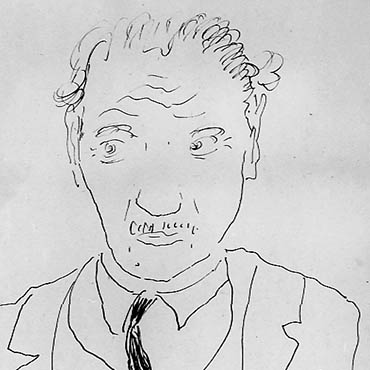The son of landed property owners, Timpanaro was born at Tortorici, in the province of Messina, in 1888. He attended the secondary school in Patti, also in the province of Messina, and obtained his diploma in the classical high school in Acireale. After that, he enrolled in the Faculty of Physics at the University of Naples, where the teaching staff included Michele Cantone, Roberto Marcolongo and Francesco Giacomo Tricomi. Timpanaro was always attracted by philosophical problems and corresponded from a very early age with Benedetto Croce and, above all, with his fellow Sicilian Giovanni Gentile, as well as making early contributions to cultural journals. After spending two years at Naples, he transferred to the University of Bologna, where he graduated in 1920, after studying with people such as Giacomo Ciamician, Luigi Donati, Federigo Enriques and Augusto Righi.
His considerations on the relationship between philosophy, science and history so absorbed him that in 1914 he helped found the journal “L’arduo”, which was born to start a discussion on these subjects, but soon interrupted publication. Only after the First World War, in which he fought and also sustained a number of wounds, Timpanaro was able to resume its publication, contributing some articles of his own, until it closed for good in 1923. The following year he was appointed as lecturer and principal of the Istituto di fisica at the University of Parma, after acting as assistant and deputy. However, as he never swore allegiance to Fascism, during a period of absence for illness in 1928 his position was not confirmed and he was dismissed.
He moved to Arezzo, where he lived off private lessons and undertook some teaching without payment. He contributed to many important journals, often with articles of a historical nature and published two anthologies of the writings of Galileo and Leonardo. Having become part of the circle in Florence connected with the magazine “Solaria”, he enjoyed the friendship of the major artists and writers of the time, such as Eugenio Montale, Salvatore Quasimodo, Elio Vittorini, Alessandro Bonsanti, Giorgio Morandi and Ottone Rosai. These friendships were connected with his passion as a collector, which resulted in a notable art collection that he left on his death to the University of Pisa. The works on the history of science that Timpanaro had produced (including two volumes of works by Galileo published by Rizzoli between 1936 and 1938), as well probably as the mutual respect that was kept alive by the exchange of letters started in his youth, convinced Giovanni Gentile to entrust to him the planning, and subsequently the directorship, of the Domus Galilaeana, set up in Pisa in the early forties.
As well as promoting journals and series on the history of science, to which he himself contributed many articles on Galileo and the major Italian scientists, Timpanaro was particularly active in expanding the stock of books and manuscripts in the library of the institute of which he was principal. It was thanks to his tenacity that the archive and the library of Antonio Favaro were included in the contents of the Domus, overcoming firstly a certain reluctance on the part of Giuseppe Favaro, Antonio’s son, and then an endless series of misfortunes caused by the war. More than once, in his letters to Gentile as well as in his work, Timpanaro had underlined the importance of Antonio Favaro’s work, not just for Favaro’s studies on Galileo, but also for the methodology required by studies on the history of science and, more generally, for his own idea that philosophy, science and literature made up a single body of knowledge, and that rigorous historical investigation was one of the principal means of understanding. Sebastiano Timpanaro senior died in Pisa in 1949. He had married Maria Cardini, and chose to give his own name to his son, Sebastiano Timpanaro, a great philologist and intellectual of the second half of the twentieth century.


